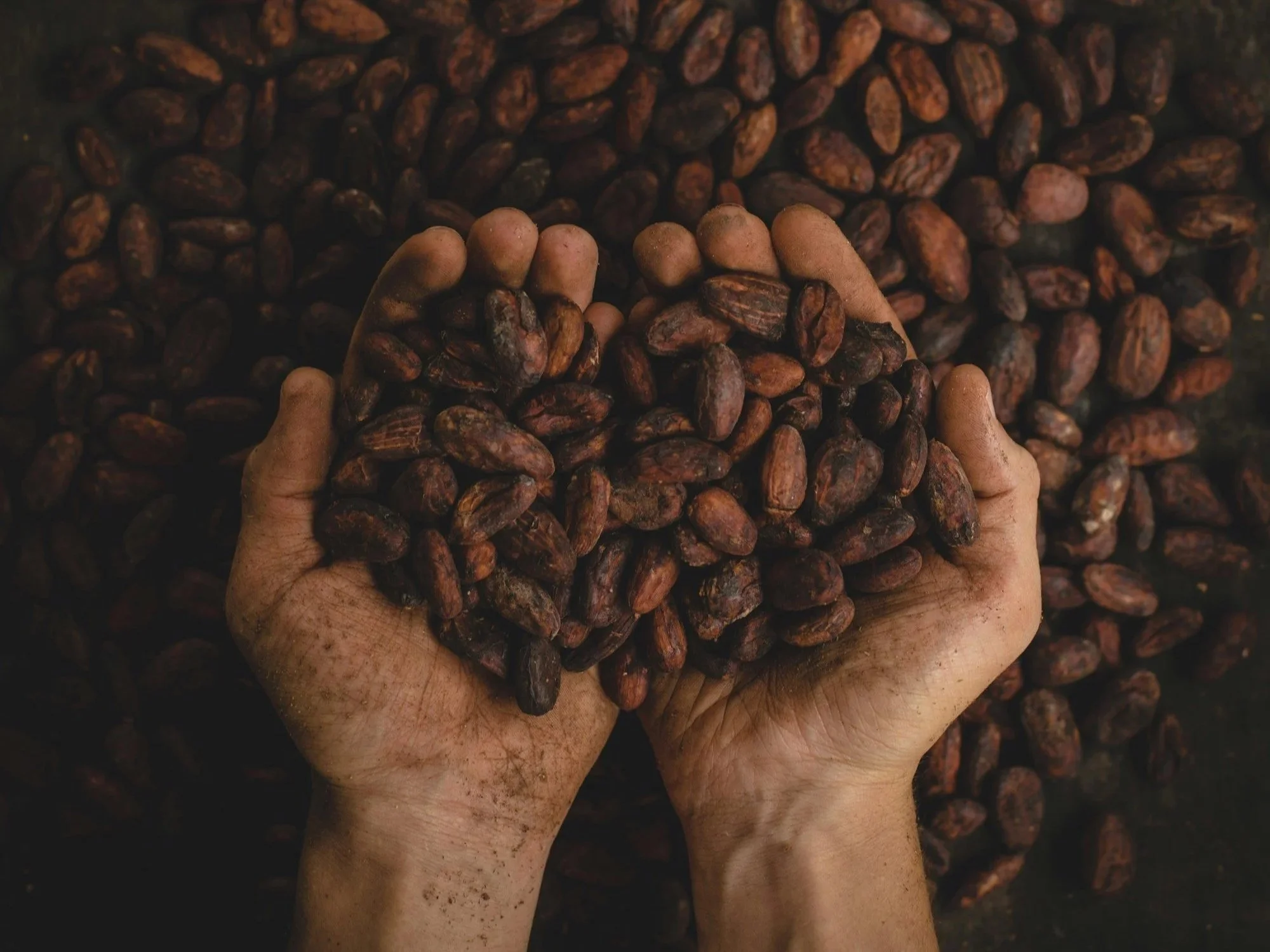Chocolate loves you back
Scroll to the bottom for an indulgent
dark chocolate tahini cup recipe.
by Jill Aida Horn, MPH
Few foods are as universally loved—or as scientifically impressive—as cacao. Beneath its reputation as a comfort indulgence lies a complex superfood packed with compounds that support heart health, brain function, mood, and longevity. The darker and more minimally processed the chocolate, the more potent its benefits become.
1. A Heart-Healthy Indulgence
Cacao is rich in flavanols—plant compounds that improve vascular function and circulation [1]. These compounds help the body produce nitric oxide, relaxing blood vessels and lowering blood pressure. Clinical trials show that people who regularly consume high-flavanol dark chocolate have better cholesterol ratios and reduced markers of inflammation [2,3]. Far from being just a dessert, cacao acts as a true cardiovascular ally.
2. Food for the Brain
Cacao enhances cerebral blood flow and supports cognitive performance. Flavanols have been shown to boost memory, attention, and processing speed—even in healthy adults [4,5]. But its impact extends beyond focus: cacao naturally contains theobromine, phenylethylamine, and anandamide, compounds that promote alert calmness, motivation, and a subtle lift in mood [6]. No wonder chocolate has been called “the food of the gods” since ancient times.
3. Mood, Hormones, and Stress Regulation
Magnesium—the mineral most abundant in cacao—is essential for nervous system balance, muscle recovery, and hormone regulation [7]. It helps blunt cortisol, reduce PMS symptoms, and promote relaxation. Combined with cacao’s mild serotonin-boosting effects, a small serving of dark chocolate can be both grounding and uplifting—a ritual for recalibrating the nervous system when life feels overstimulating [8,9].
4. Antioxidants for Cellular Defense
Cacao’s polyphenols act as powerful antioxidants, helping protect cells from oxidative stress and chronic inflammation [10]. Studies have found that regular dark chocolate intake improves markers of skin hydration and resilience while supporting endothelial health [11]. It’s one of the few foods that nourishes both how we feel and how we age.
Final Bite: Cacao reminds us that pleasure can be profoundly good for us. When chosen consciously and savored slowly, dark chocolate becomes more than a treat—it’s a ritual for heart, mind, and mood. The richer the cacao, the deeper the benefits.
Recipe of the Week:
Dark Chocolate Tahini Cups
rich, nutty, and perfectly balanced
Ingredients:
7 oz dark chocolate (at least 74%)
2 tbsp coconut oil
1/3 cup tahini (well-stirred)
3 tbsp coconut sugar
3 tbsp oat flour (or rice flour)
Flaky sea salt
Directions:
Line a mini muffin tin with paper liners.
Melt tahini, coconut oil, and coconut sugar together over low heat until smooth. Add oat flour.
Melt chocolate in a separate pan on low heat or over a water bath.
Spoon 1 tsp of melted chocolate into each liner and tilt to coat the bottom.
Add a small spoonful of the tahini filling to each base, then top with remaining chocolate to seal.
Sprinkle with flaky sea salt and refrigerate or freeze until firm.
Store in the fridge and enjoy chilled.
References:
Grassi, D., et al. (2015). Frontiers in Nutrition, 2, 1–7.
Ried, K., et al. (2012). Cochrane Database of Systematic Reviews, (8), CD008893.
Shrime, M. G., et al. (2011). BMJ, 343, d4488.
Mastroiacovo, D., et al. (2015). Am J Clin Nutr, 101(3), 538–548.
Sorond, F. A., et al. (2013). Neuropsychiatric Disease and Treatment, 9, 1499–1507.
Macht, M. (2007). Appetite, 49(3), 667–674.
Gröber, U., et al. (2015). Nutrients, 7(9), 8199–8226.
Boyle, N. B., et al. (2017). Nutrients, 9(9), 897.
Sarris, J., et al. (2016). Nutrients, 8(11), 697.
Mellor, D. D., et al. (2013). Nutrition & Metabolism, 10(1), 71.
Heinrich, U., et al. (2006). Journal of Nutrition, 136(6), 1565–1569.


